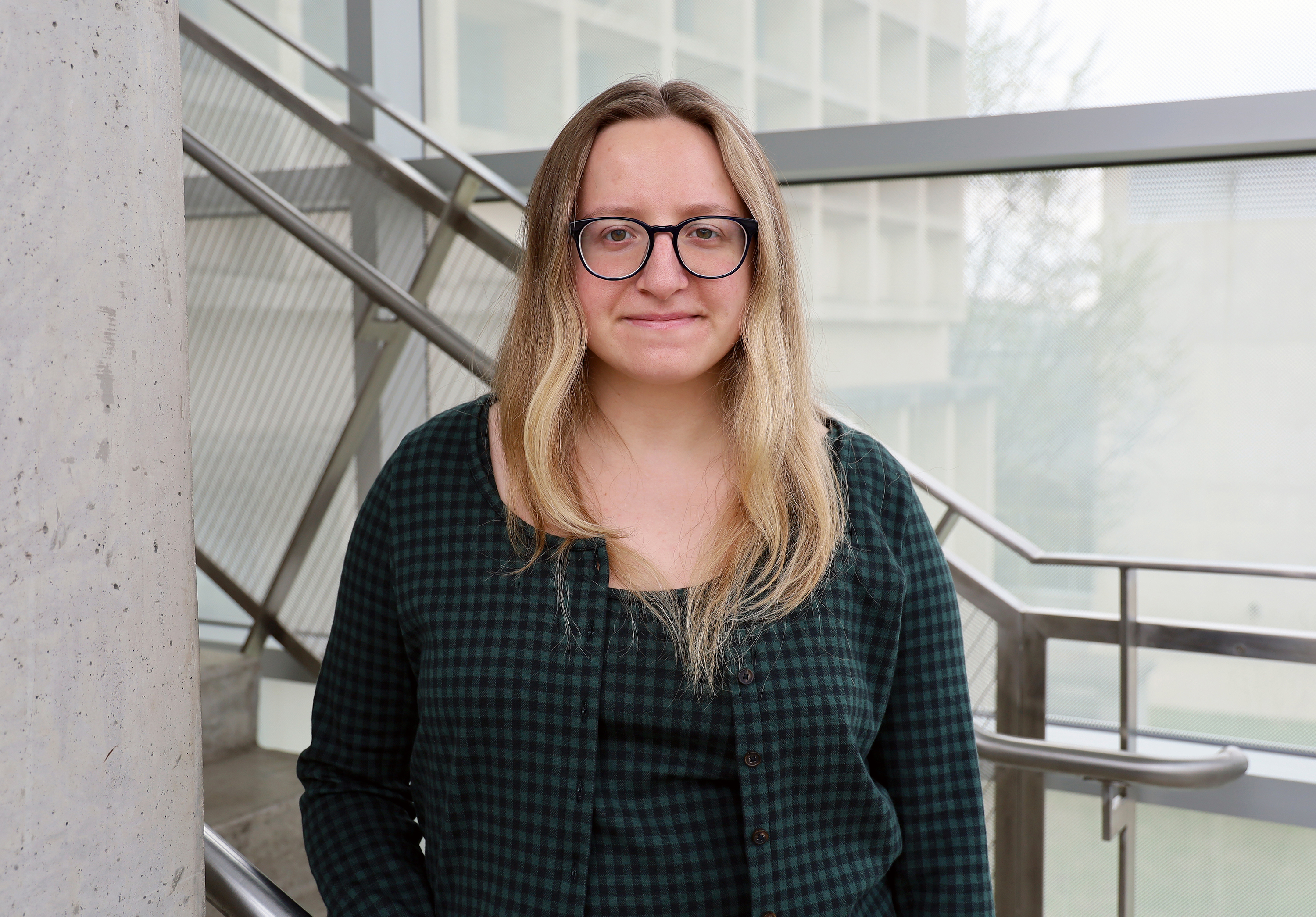A fresh look at transmission risks
Class project prompts PhD student Maddy Lewis’ combo of environmental, epidemiological methods
By Kristen Mitchell

Throughout her academic career, epidemiology PhD student Maddy Lewis keeps coming back to one question — what is missing that is simple?
She was excited to explore that question while taking PUBHEHS 7375: Quantitative Microbial Risk Analysis Modeling with Associate Professor Mark Weir. Tasked with building a scenario involving infection risk, she focused on poliovirus immunization campaigns and how surface water plays into polio transmission and mitigation efforts.
Through the project, Lewis came up with a fresh way to think about multi-dimensional transmission risks, a perspective which could impact how public health practitioners think about future efforts to vaccinate people against polio.
Highly infectious, polio is transmitted through contact with an infected person or their feces, which can contaminate food and water. Because polio can be transmitted through unsanitary surface water such as lakes and rivers, immunization campaigns should incorporate the potential impact on downstream populations into their planning, Lewis’ research suggests. These types of environmental risks are often overlooked in traditional transmission models used to develop prevention strategies, she said.
“When we think about immunization programs, the key is to vaccinate as many people as possible, but there are limitations to that in terms of infrastructure,” Lewis said. “There is a key route of transmission that can occur through water in this situation…this is a potential risk that is being overlooked.”
While polio has been eradicated in much of the world, it is still common in Afghanistan and Pakistan. Failure to stop polio in these areas could result in a global resurgence of the disease, according to the World Health Organization.
Lewis has built upon her research in Weir’s class in her dissertation project, which is focused on estimating infection risks in health care. Traditional epidemiology methods are “very transmission based, focused on patient-to-patient transmission,” she said, adding that environmental modeling, like the work she is doing with polio, looks at risks outside of direct human transmission.
“Transmission isn’t one dimensional,” she said. “The goal of my dissertation is to find a way…to ideally provide more comprehensive insight to health care associated infection interventions. I don’t think one method, or a straightforward method, can address risks that are this complex.”
Lewis said she was drawn to epidemiology because she wanted to look at the bigger picture of infectious disease and population health after studying microbiology as an undergraduate. Working with Weir has pushed her to think outside traditional epidemiology frameworks and highlighted the need for transdisciplinary research, Lewis said.
Said Weir: “For a lot of the bigger questions that are going to be coming fast and furious for climate change impacts, we need people like Maddy who can think in multiple directions through multiple fields and not be intimidated by the complexity of the problem that they’re going to be asked to answer.”